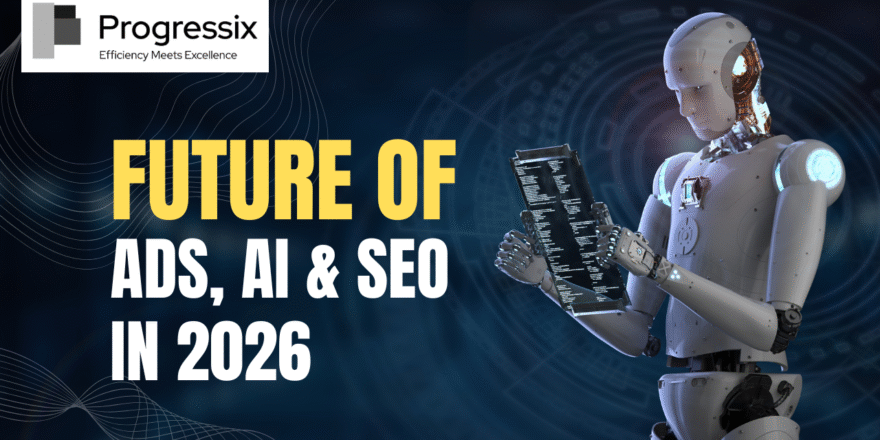Student Information Systems (SIS)
Imagine a bustling school where teachers, students, and parents are all trying to keep track of grades, attendance, and personal information. The sheer volume of data can lead to confusion, mismanagement, and inefficiencies.
This is where Student Information Systems (SIS) come into play. SIS acts as a centralized platform that streamlines data management, enhances communication, and ensures the accuracy of information, transforming how educational institutions operate.
Read Also: Why Upgrading to Modern Education ERP Software is Crucial in 2025
What is a Student Information System (SIS)?
A Student Information System (SIS) is a software platform that centralizes, manages, and automates student-related data and school operations. It serves as the digital backbone of educational institutions, replacing paper-based records and disconnected spreadsheets with an integrated, cloud-based system.
Why Every School Needs a Student Information System (SIS)

The Chaos of Manual School Management
Imagin this:
- Teachers juggling paper attendance sheets that often get lost.
- Administrators spending hours manually entering grades into spreadsheets.
- Parents frustrated by delayed report cards and unclear progress updates.
- Students missing deadlines because assignments weren’t properly tracked.
Without a centralized system, schools drown in disorganized data, inefficiencies, and miscommunication.
Enter the Student Information System (SIS): Your School’s Digital Backbone
A Student Information System (SIS) is the all-in-one digital solution that:
✔ Stores & organizes student data (grades, attendance, health records) in one secure platform.
✔ Automates administrative tasks (grading, scheduling, fee management) to save time.
✔ Improves communication between teachers, parents, and students with real-time updates.
✔ Generates reports instantly—no more waiting for manual compilations.
Read Also: The Power of Attendance Management Software in Enhancing Educational Efficiency
5 Key Reasons Schools Can’t Afford to Ignore an SIS
1. Eliminates Data Silos & Human Errors
- No more lost files, duplicate entries, or incorrect grades.
- Everything is digitally stored, searchable, and secure.
2. Saves Hundreds of Administrative Hours
- Automated report cards, attendance tracking, and enrollment reduce paperwork by 50% or more.
3. Boosts Parent & Student Engagement
- Parents get real-time notifications on grades, attendance, and school announcements.
- Students can track assignments and deadlines via mobile-friendly dashboards.
4. Enhances Decision-Making with Data Analytics
- Spot learning gaps, attendance trends, and at-risk students with AI-driven insights.
- Make strategic improvements based on real data—not guesswork.
5. Scales with Your Institution
- Works for K-12 schools, colleges, and universities.
- Cloud-based access means no expensive hardware upgrades.
Read Also: The Secrets to Successful Educational App Development in 2025
The Hidden Challenges of Implementing Student Information Systems (And How to Overcome Them)
The Rocky Road to Digital Transformation
While Student Information Systems promise revolutionary benefits, implementation rarely goes as smoothly as vendors claim. Schools face very real obstacles when transitioning to these digital platforms:
1. The Data Migration Maze
- Years of student records trapped in incompatible formats (paper files, legacy software, Excel spreadsheets)
- Incomplete historical data requiring manual verification
- The time-consuming process of cleaning and standardizing information before import
2. Resistance to Change
- Veteran staff clinging to familiar (but inefficient) paper-based systems
- “If it’s not broken…” mentality despite obvious inefficiencies
- Anxiety about new technology among less tech-savvy faculty members
3. Security Concerns in the Digital Age
- Cybersecurity threats targeting sensitive student data
- Compliance with strict regulations like FERPA and GDPR
- Balancing accessibility with proper data protection measures
Turning Implementation Challenges Into Success Stories
These obstacles aren’t insurmountable. Forward-thinking schools are overcoming them through:
Phased Rollout Strategies
- Starting with pilot programs in select departments
- Gradually expanding system access as comfort grows
- Celebrating quick wins to build momentum
Comprehensive Change Management
- Identifying and empowering tech champions among staff
- Providing multiple training formats (videos, cheat sheets, live demos)
- Creating feedback channels for continuous improvement
Robust Security Frameworks
- Implementing role-based access controls
- Conducting regular security audits
- Establishing clear data governance policies
The Payoff of Persistence
Schools that navigate these implementation challenges successfully report:
- 60-80% reduction in administrative workload
- 90%+ adoption rates after proper training periods
- Significant improvements in data accuracy and accessibility
The transition may be challenging, but the long-term benefits make overcoming these hurdles well worth the effort. With proper planning and execution, your SIS implementation can transform from a source of frustration to your school’s greatest efficiency asset.
Read Also: Top 10 Advantages of Taking Your Coaching Institute Online
Why States Are Standardizing on Single SIS Platforms – And What’s Coming Next

The Power of Statewide SIS Adoption
Across the U.S., a growing number of state education departments are making a strategic decision: implementing the same Student Information System (SIS) across all schools. This trend toward standardization is transforming education administration through:
1. Universal Data Standards
- Enables apples-to-apples comparisons across districts
- Eliminates compatibility issues when students transfer schools
- Creates clean datasets for state-wide education research
2. Massive Cost Savings
- Bulk purchasing power reduces licensing fees by 30-50%
- Eliminates redundant training programs across districts
- Lowers IT support costs through standardized systems
3. Streamlined Compliance
- Automated state/federal reporting built into the system
- Real-time monitoring of graduation rates and other metrics
- Simplified auditing processes for all schools
The Next Frontier: AI-Powered SIS Evolution
While standardization solves many challenges, emerging technologies are taking SIS capabilities even further:
Read Also: 20 Ways Digital Transformation in Education Affects School Leaders
Cloud Revolution
- 24/7 access from any device with internet
- Automatic updates without local IT support
- Built-in disaster recovery and data redundancy
Deep LMS Integration
- Single sign-on for all education platforms
- Automatic gradebook synchronization
- Unified analytics combining academic and administrative data
Agentic AI Breakthroughs
These autonomous AI systems are transforming SIS into:
- Predictive guardians that flag at-risk students weeks before human observers might notice
- Automated administrators handling routine paperwork and compliance tasks
- Personalized learning engines that adapt resources to each student’s needs
The Future Is Here (And It’s Statewide)
As states continue adopting unified SIS platforms, we’re seeing:
- Faster identification of achievement gaps across regions
- More equitable resource allocation based on real data
- New possibilities for longitudinal education research
The combination of statewide standardization and cutting-edge AI is creating an education data infrastructure that would have been unimaginable just a decade ago – one that promises to make schools more efficient, more equitable, and more effective at serving every student’s needs.
Read Also: Manage Your Hostels on Your Smartphone
✅ Pros of Student Information Systems (SIS)
1. Streamlined Administrative Tasks
- Automates attendance, grading, and scheduling
- Reduces paperwork and manual data entry
- Saves time for teachers and administrators
2. Improved Communication
- Real-time updates for parents on grades and attendance
- Teacher-parent messaging within the system
- Centralized announcements and alerts
3. Data-Driven Decision Making
- Tracks student performance trends
- Identifies at-risk students early
- Generates reports for compliance and funding
4. Enhanced Security & Compliance
- Role-based access protects sensitive data
- Complies with FERPA, GDPR, and other regulations
- Cloud backups prevent data loss
5. Scalability & Integration
- Works for K-12, colleges, and universities
- Integrates with LMS, ERP, and other edtech tools
- Supports growing student populations
❌ Cons of Student Information Systems (SIS)
1. High Implementation Costs
- Upfront licensing and setup fees
- Training and onboarding expenses
- Potential need for IT infrastructure upgrades
2. Resistance to Change
- Staff may prefer old systems
- Learning curve for non-tech-savvy users
- Temporary productivity dip during transition
3. Data Privacy Risks
- Cybersecurity threats (hacking, breaches)
- Requires strict access controls
- Compliance audits add complexity
4. Vendor Lock-In Risks
- Difficult to switch systems later
- Dependence on vendor updates and support
- Customization may be limited
5. Technical Issues
- Downtime during updates or outages
- Integration challenges with legacy systems
- Requires ongoing IT maintenance
How Progressix – Patna’s Leading SIS Provider – Transforms School Management

Revolutionizing Education Administration with Smart SIS Solutions
Progressix stands as Patna’s premier Student Information System (SIS) provider, offering comprehensive digital transformation for educational institutions. Our cutting-edge platform addresses every critical aspect of school management through innovative technology solutions.
Read Also: Why Your School Needs an Attendance Monitoring System Now
Key Benefits of Progressix SIS for Patna Schools
1. Comprehensive Student Data Management
• Centralized digital profiles for all students
• Complete academic history tracking
• Health records and special needs documentation
• Behavioral and disciplinary records
2. Automated Administrative Processes
• AI-powered attendance tracking with facial recognition
• Automated timetable generation and classroom allocation
• Digital gradebooks with customizable assessment criteria
• Streamlined admission and enrollment workflows
3. Enhanced Communication Ecosystem
• Parent portal with real-time performance updates
• Teacher-student messaging platform
• Automated SMS/email alerts for important notices
• Event management and calendar synchronization
4. Advanced Analytics & Reporting
• Predictive analytics for at-risk students
• Customizable dashboard for school leadership
• Automated compliance reporting for education boards
• Data visualization tools for performance analysis
Why Progressix Stands Out in Patna’s EdTech Market
Localized Solutions
• Hindi language interface support
• Compliance with Bihar education board requirements
• Custom modules for regional assessment patterns
Superior Technology
• Cloud-based platform with 99.9% uptime
• Mobile app for Android and iOS
• Blockchain-secured data storage
Unmatched Support
• Dedicated account managers for each school
• On-site training programs
• 24/7 helpdesk with local Patna team
Getting Started with Progressix
We offer:
• Free needs assessment consultation
• Customized implementation plan
• Phased rollout strategy
• Ongoing optimization support
📞 Contact Progressix Today: 097174 33586
🌐 www.progressix.in
✉️ info@progressix.in
❓ FAQs About Student Information Systems (SIS)
Q1: What is an SIS, and how is it different from an LMS?
- SIS = Manages student data (grades, attendance, enrollment)
- LMS = Manages learning content (assignments, courses, quizzes)
Q2: How much does an SIS cost?
- Varies by size: Small schools (1K−1K−5K/year), districts (10K−10K−50K/year)
- Cloud-based options reduce hardware costs
Q3: Can an SIS work offline?
- Some offer offline modes, but cloud-based systems need internet
- Mobile apps allow limited offline access
Q4: How long does SIS implementation take?
- Small schools: 1-3 months
- Large districts: 6-12 months (data migration + training)
Q5: What’s the future of SIS?
- AI-driven analytics (predictive learning paths)
- Voice & chatbot assistants for parents/students
- Blockchain for secure credentialing
Conclusion
Student Information Systems (SIS) have become indispensable in modern education, streamlining administrative tasks, improving communication, and supporting data-driven decision-making. While challenges like data migration, change resistance, and security concerns exist, strategic improvements in integration, user experience, training, and analytics can maximize the benefits of SIS.
As technology advances, particularly with cloud-based solutions and AI integration, SIS will continue to shape the future of education, creating a more efficient, collaborative, and secure learning environment for all stakeholders.
Thanks for Reading…..
Contact Us: 097174 33586
Visit: www.progressix.in
Follow Us:
Linkedin – https://www.linkedin.com/company/progressix/
Facebook – https://www.facebook.com/progressixdigital
Instagram – https://www.instagram.com/progressix_digital/





